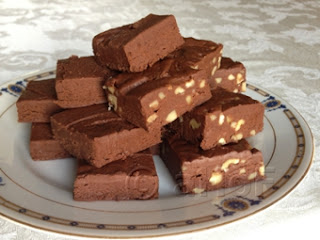 |
| Bobalky: remembering Dad and Grandma with love |
 |
| Soaking the little balls of bread |
Happily, I own a poppy seed grinder. I ground up a small amount yesterday to make my sample and write down the recipe. Did you know that ¼ cup of poppy seeds only weigh ¾ of an ounce? Amazing. There are about a million seeds in one pound! I will be grinding about a million seeds very soon, when I make my Slovak Rolls for Christmas. Those are from my maternal grandmother's side of the family, and the other poppy seed Christmas treat. For now, I wanted to share my memory of having Bobalky each year, and carrying on treasured family traditions, with love.

Bobalky
10 ounces frozen bread dough, thawed
1/4 cup (3/4 ounce) ground poppy seeds
1/3 - 1/2 cup honey
Once the dough is thawed, begin separating out sections and rolling into a 1/2 inch thick log. Cut the log into 1/2-inch segments and set them on a greased baking sheet to rise. Allow about 1-inch of space between the pieces, for rising. Set them aside in a warm place to rise and once doubled, bake them in a preheated 350-degree oven for 10 to 12 minutes, or until golden.

Immediately turn the little balls into a large colander and set the colander into a large bowl. Run hot water over the balls, tossing repeatedly with hands or a silicone spatula. Very gently, squeeze the balls just until you can feel the air starting to leave them. This ensures they will absorb enough water. They should be very soft. Dump the wet bread balls into a bowl and add in the ground poppy seeds and the honey, to taste. Toss until combined. Enjoy!
My passion is to teach people how to create a harmony of flavors with their cooking, and help pass along my love and joy of food, both simple and exotic, plain or fancy. I continue my journey in ethnic and domestic cuisines, trying new things weekly. Join me at A Harmony of Flavors on Facebook and Pinterest.













